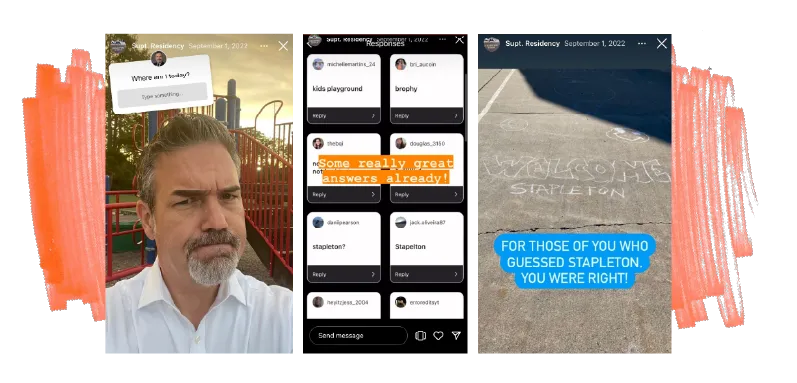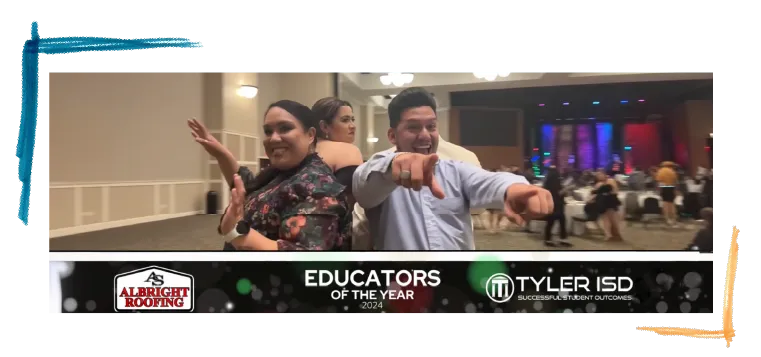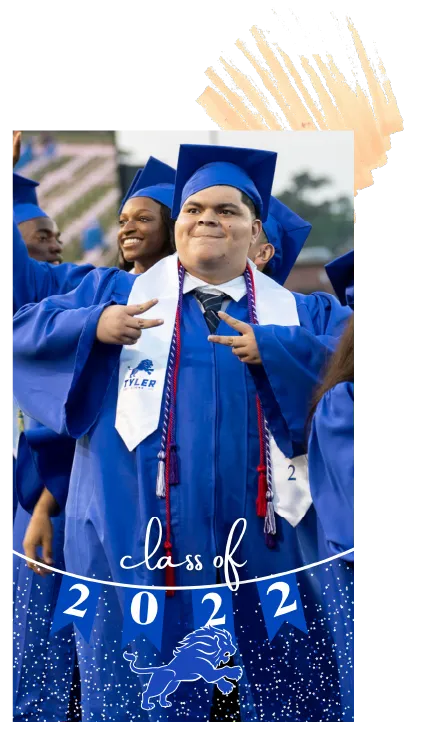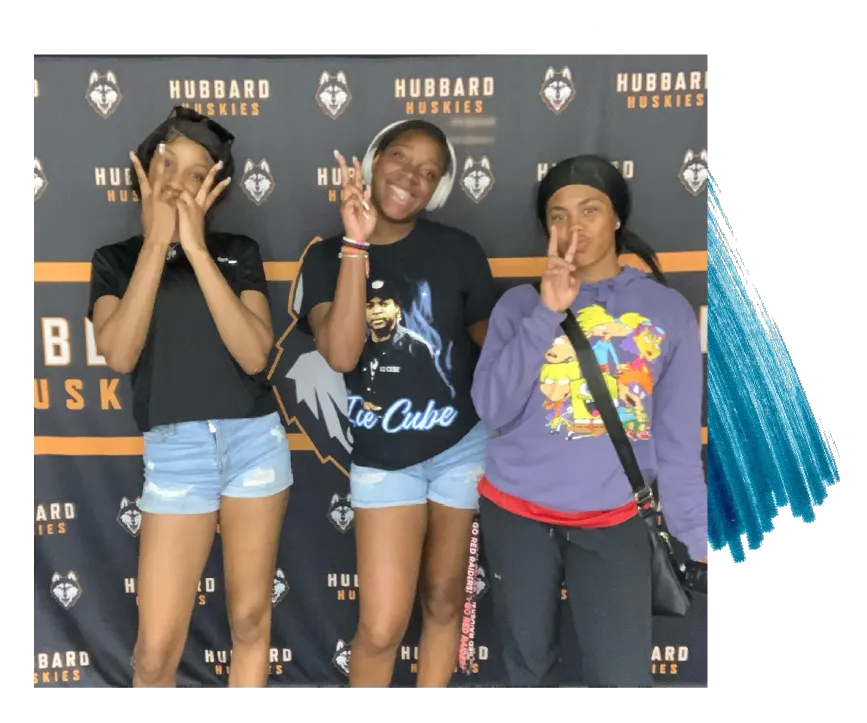Pics or It Didn’t Happen
Using digital marketing to amplify in-person experiences


Pics or It Didn't Happen
Using digital marketing to amplify experiences
Think about an experience you’ve had that left you feeling alive and happy. Maybe it was a recent family trip or a long, winding conversation with friends. There’s something to be said for simply being present in these moments, but sometimes the irresistible urge to document these experiences creeps in. And if you’re like most people, you have to scratch that itch. So what do you do? You reach into your pocket, pull out your phone and take a quick picture or video. After all—as Gen Z says—if you didn’t document it on social media, did it ever really happen?
How your online presence enhances in-person experiences
Taking photos or videos is a way to capture important memories and share them with loved ones who aren’t there to experience them. But for some, documenting moments is also a vital part of the experience itself. One study published in the Journal of Personality and Social Psychology found that simply taking photos during in-person experiences—visiting a museum, going on a bus tour or eating at a nice restaurant—actually enhanced the enjoyment of those experiences for the majority of participants.
If you’re in communications or work with a school communicator, you know that in-person experiences aren’t just about putting on a great event. They’re also opportunities to capture good content and share it across all of your communication channels. And that’s important for a number of different reasons, such as building brand awareness, increasing engagement metrics and maintaining touch points with your community—all of the bread and butter reasons why having an online presence plays a role in marketing your schools.
But broadcasting in-person experiences through online channels is about much more than just marketing. It’s also about connection; more importantly, it’s about connecting with people who can’t be there with you in person. Think about the parent who worked a double shift and couldn’t make it to their child’s back-to-school event, or grandparents who live out of town and couldn’t attend their grandchild’s high school graduation ceremony. Sharing these experiences online helps people in your community feel connected to your schools, even if they can’t always be physically present with you.
Gen Z is also changing the way we communicate and interact. Recent research suggests that Gen Z spends almost three hours a day on social media. So as you think about different ways to get students excited about your events, it’s important to keep in mind how you’re showing up and broadcasting those events on the communication channels they prefer, like social media.
We talked to a few different school leaders and communicators who understand the vital role digital marketing plays in experiential marketing. They’ve figured out how to not only generate buzz around their events but also get people talking about these experiences long after they happened.
Strengthen connections with social media.
While some may see social media as a barrier to in-person relationships, Mariah Linnett, the creative communications designer for Framingham Public Schools in Massachusetts, used social media to strengthen connections between her superintendent and his school community. From the fall of 2022 to the winter of 2023, Superintendent Dr. Bob Tremblay spent time in each of the district’s 15 schools in what he calls his “superintendent residency.”

The residency idea started early in his tenure as a way for Dr. Tremblay to get to know the district environment. Each week, Tremblay would tour a different Framingham school. “I would be a part of everything from riding the bus with the kids to being in the lunchroom and talking with them,” he says. “I’d have office hours and even my leadership meetings at the school. It took a while for the staff to warm up to the idea because it felt like an undercover boss kind of thing, but then they realized I was really there just to understand the schools.”
From a communications standpoint, Linnett realized the residency was an opportunity to keep families and students across the district in the loop, and that the vehicle for doing so was social media. She devised a clever plan to gamify his visits through multiple video series posted on Tremblay’s Instagram and TikTok accounts.
At the beginning of each week, Linnett and Tremblay would post an Instagram story featuring Tremblay at one of the district’s schools, challenging followers to guess where he was. They’d also include a question box in the story so people could submit their answers. Later, Linnett would share everyone’s guesses through a follow-up story. They’d cap off the series by finally revealing his location.
Some of the answers turned out to be pretty silly. “The students started saying he was all over the country, just so they could see their crazy answers on his next story,” Linnett says. It became a fun game for everyone in the district to participate in.
Since so many Framingham students use Instagram and TikTok, launching a social media campaign was also a way to humanize Dr. Tremblay on channels students frequent. “When I was in school, I don’t think I could have picked my superintendent out of a crowd,” Linnett says. “So I wanted to show Bob’s personable side and how fun he is, and that he cares about the kids.”
Throughout each week, Linnett also posted pictures and videos on Dr. Tremblay’s Instagram and TikTok accounts, sharing what he was up to at each school. In one series, Tremblay interviews high school students, asking questions like, “What are your pet peeves?” or “Can you finish the lyrics to this song?” He even asks one high school student, “Who am I?” When the student doesn’t know, they both laugh—then Tremblay extends his hand and introduces himself.
At the end of each week, Tremblay shared his reflections about his experiences with Linnett, who would summarize his thoughts and share them on his Facebook account. His posts, which often read like journal entries, have a lived-in, sincere quality about them.
"So, what have I learned about our students during my 9-day visit at FHS? Our students love hands-on learning and I saw it happen in so many different ways and across the subjects. Our students are smart, multi-talented, inquisitive, caring, patient, independent-minded, and have an insatiable appetite for chicken tenders and warm Otis Spunkmeyer cookies. And what have I learned about myself over these last two weeks? I have forgotten how to conduct a band, my basketball skills are extraordinarily limited, and my ability to draw a model using charcoal is really pretty awful. But, I had the opportunity to learn, make mistakes, take risks, and to be surrounded by a school community that celebrates the learning journey. And that is what it's all about!"
For Dr. Tremblay, the residency was about breaking down barriers between students, staff and the superintendent’s office. “It’s a serious job, but you don’t have to take yourself that seriously. So I don’t,” he says. “I stopped wearing a tie in 2019. I’m just not that guy.”
The result? Students started engaging more with their superintendent both in person and online. “It’s fun when you walk into a building and they’re like, ‘You were on TikTok! Can you do a TikTok with me?’” says Linnett. “It makes it so the students are more willing to come up and talk to him, and that was one of the goals. Obviously, you always want to increase your reach, but I think it was more about making him approachable in the community.”
Families and staff from across the district also felt more connected as a result of the campaign. “We’d see the comments on TikTok of the kids being like, ‘That’s my school!’ Or, ‘Come do this at my school!’ They all got involved,” says Linnett. “We’re a very large district with 15 different schools. So it made all of our kids feel connected even though they’re in different buildings.”
Dr. Tremblay set out with a clear purpose during his superintendent residency: Make every student and staff member at his schools feel appreciated. But with Linnett’s help, the residency became even bigger. Together, they leveraged social media to highlight the work he was doing, while making everyone in their district feel more connected to one another. The tie came off, and—thanks to a clever social media campaign—his community discovered that, in many ways, he was just like them.
Provide experiences that prompt sharing.
Jennifer Hines, chief communications officer at Tyler ISD in Texas, understands that the best experiences enable you to live in the moment—but also have something to show for it later. Her district has taken this mindset to new heights by investing in technology that allows both the district and the event attendees to gather content simultaneously.
360-Degree Camera
Hines knows that any event is more fun when you give people something to do. Each year, Tyler ISD hosts an Educators of the Year Banquet to honor their staff for all their hard work. In years past, the events had special themes, like '80s Night, but in more recent years the banquets have morphed into an elegant cocktail affair. "Everyone dresses up, and there's a red carpet people walk down. It's a fun evening," says Hines.

For their 2024 banquet, Hines wanted to add a bit more pizzazz to the evening and find a way to make it even more fun. That’s when she and her team came up with the idea of renting a 360-degree camera, sponsored by a generous local business partner. Attendees could stand on a round platform while a camera rotated in a circle around them, taking a video as it moved. “It gave people something to do at the event, so they could take a selfie, or they could do a little dance with their award,” she said. The best part? The camera would send the video straight to the individual. “Then they could share those videos on social media or text them to friends and family,” says Hines. It was such a hit that Hines plans to buy a 360-degree camera for future events.
While the camera’s primary purpose was to make the event more fun, it turned out to pay even bigger dividends. It also encouraged people to loosen up, get out of their shells and connect with one another. “It helped people not only engage in the event, but also with each other,” says Hines. And because attendees shared their videos, more people heard about the event.
You might not find someone to sponsor a 360-degree camera at your next shindig, but you can still give people something to do at your events. Buy a couple of Polaroid cameras and create a photo backdrop that features your district’s branding. Encourage attendees to post photos using your event hashtag on social media, then feature their pictures on a big screen. Anything that gives people something to do but also prompts them to share their experiences online is great for your community and your district brand.

Snapchat-Filters
Even something small like creating a branded Snapchat filter for an event can make the moment feel bigger. For Tyler ISD’s 2022 high school graduation ceremony, Hines and the district’s Facilitator of Marketing Skyler Hefley designed custom Snapchat filters representing all four high schools. “We wanted students to be proud of where they go to school and give a little FOMO to other students that aren’t in the district,” Hefley says. “It’s good branded content.”
The best part? It was a low-cost, high-reward investment. “I think we paid less than $200 to do it, so I thought, Why wouldn’t we just try it?” says Hines. Even though Snapchat doesn’t allow you to track who uses your filter on an individual basis, the general metrics were still impressive. One filter alone got 51,300 views with a 73% usage score. That’s a lot of brand impressions for a relatively low price tag. Plus, the filter made it more fun for students to post about graduation when they may not have done so otherwise.
Portable-iPad-Photo-Booth
“We had a ribbon-cutting ceremony for our recently opened Hubbard Middle School, and the principal purchased this portable iPad photo booth,” Hines says. “You can put your iPad in, and it does a quick countdown and takes a picture.” Once the photo is taken, it’s sent to both the individual and the event host.
Both Hines and Hubbard Middle’s Principal John Smiley saw this as a great branding opportunity. Smiley plans on using the photos throughout the year to help them market their school. “It’s a win-win,” says Hines. “You’re giving them the experience, and they’re loving it—but you also are getting the assets to use later.”
Use digital marketing to amplify in-person experiences.
Hines is on a mission to empower every principal in Tyler ISD to think more about digitally documenting in-person events. She believes the district’s communications office should pave the way and that many principals don’t know what’s possible until you show them.
“When you start getting them to see these things, they start realizing, We do need to up our digital game. We do need to update our website. We do need to have really good posts on our Facebook.” says Hines. “A lot of times educators are so focused on what they’re doing that they don’t look up and ‘clean the windows,’ so to speak, so that the public can see all the great things that they’re doing inside.”
As communicators, it’s important to think about the small ways you can broadcast your events online, whether that’s creating custom-branded Snapchat filters or investing in new technology that helps capture experiences right as they’re happening. If there’s one thing Hines has taught us, it’s this: Digital media tools can actually bring people together at your events—whether virtually or in-person—and make the moment that much sweeter.

It’s true, in-person events give us something digital media doesn’t. They invite us into an immersive sensory experience that our phones can’t quite replicate. But technology is also changing the way we show up at events, and as communicators, it’s critical for you to adapt to these changes. Digital marketing for schools doesn’t take the place of in-person experiences, but in many ways, it acts as a megaphone, amplifying those experiences to an even broader audience.

